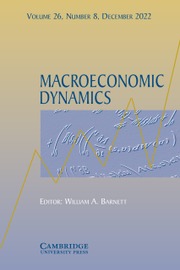No CrossRef data available.
Article contents
Bank shocks and the debt structure
Published online by Cambridge University Press: 07 October 2024
Abstract
This article studies how sudden changes in bank credit supply impact economic activity. I identify shocks to bank credit supply based on firms’ aggregate debt composition. I use a model where firms fund production with bonds and loans. In the model, bank shocks are the only type of shock that imply opposite movements in the two types of debt as firms adjust their debt composition to new credit conditions. Bank shocks account for a third of output fluctuations and are predictive of the bond spread.
- Type
- Articles
- Information
- Copyright
- © The Author(s), 2024. Published by Cambridge University Press
Footnotes
Banque de France, 31 rue Croix-des-Petits-Champs 75049 Paris, France (email: [email protected]). I thank Yvan Bécard, Ambrogio Cesa-Bianchi, Fiorella De Fiore, Matteo Iacoviello, Michel Juillard, Riccardo Masolo, Julien Matheron, Christian Matthes, Francesca Monti, Johannes Pfeifer, Gabor Pinter, Ricardo Reis and Stephanie Schmitt-Grohe as well as an anonymous referee and the associate editor of the Macroeconomic Dynamics journal for their invaluable comments and suggestions.


